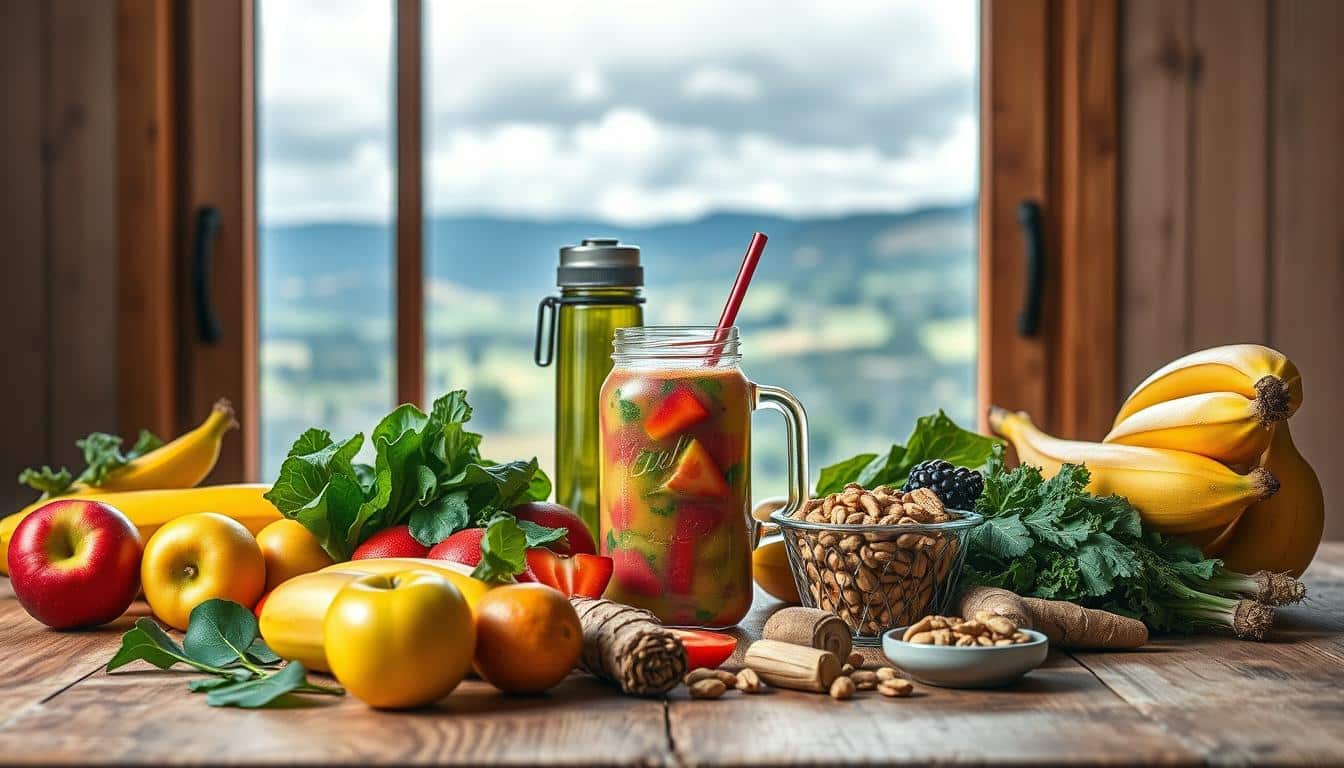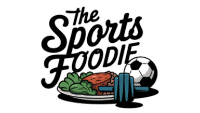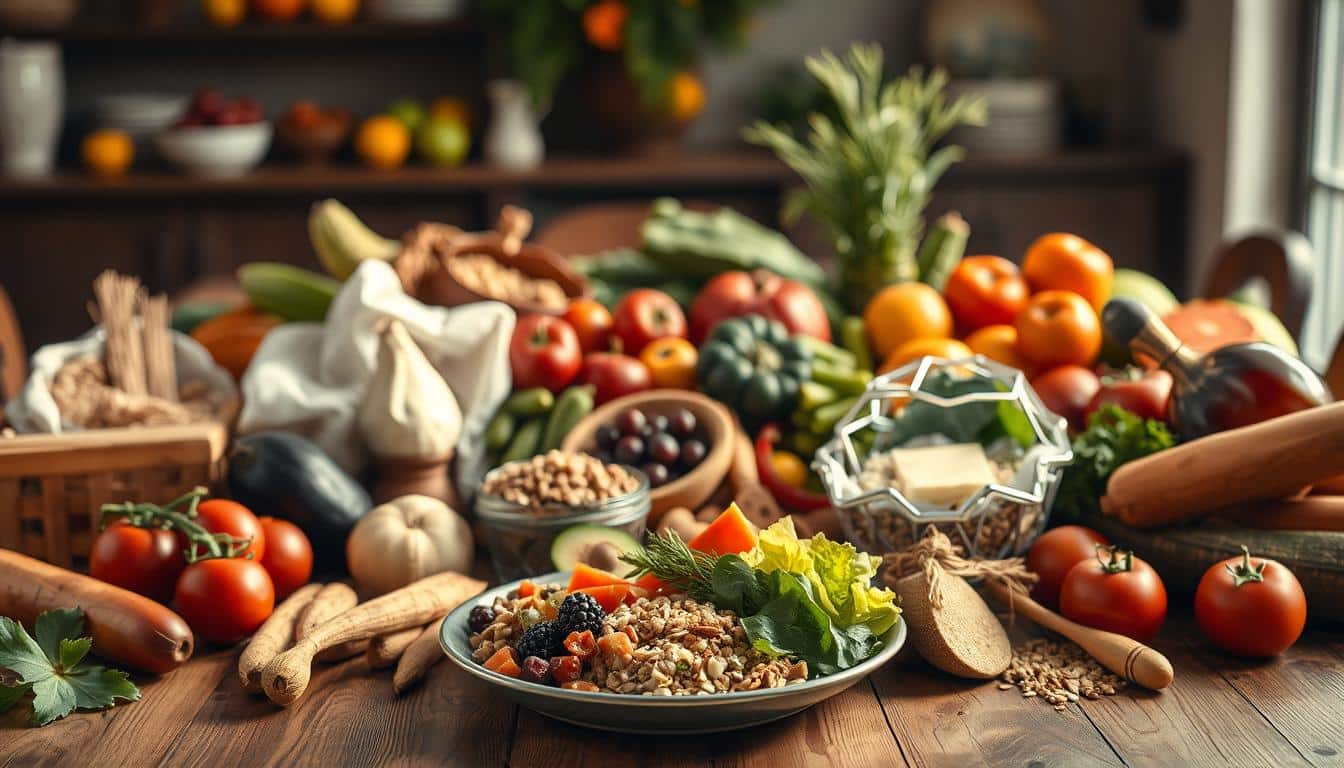Surprising fact: athletes who plan steady off-season nutrition see up to a 25% faster recovery when they resume heavy training.
I’ve seen this work in real training cycles. You keep muscle repair and glycogen topped up while avoiding unwanted weight swings. That makes your next season easier and less stressful.
Match calories to your current volume. Protein at 1.2–1.6 g/kg supports repair. Aim at 1.6–2.0 g/kg if you want body-composition gains. Keep complex carbs in the plan so glycogen stays ready for key sessions.
Include healthy fats and omega-3s to help joints and immune health. Check hydration with urine color and thirst. Spread protein across meals, fuel key workouts, and ramp carbs as training builds.
Quick wins: set simple goals, track one metric, and follow one phase long enough to see progress.
Why off-season nutrition matters for recovery and future performance
A clear eating plan after the season cuts recovery time and lowers injury risk when you restart training.
Good off-season nutrition supports muscle repair and immune function. Aim for protein at 1.2–1.6 g/kg to help recovery. Steady carbohydrates protect glycogen stores even with lower mileage.
You avoid long lag times in recovery by matching intake to reduced training while covering core needs. Regular meals keep hunger predictable and stabilize mood and sleep. That helps performance when you ramp volume again.

- Refill glycogen stores with steady carbs so light runs feel easier.
- Keep protein daily to repair muscle and limit injury risk.
- Stay hydrated and include micronutrients to protect health.
| Action | Why it matters | Practical tip |
|---|---|---|
| Match calories to training | Prevents unwanted weight gain and speeds recovery | Track one metric: weekly weight or energy |
| Protect glycogen stores | Keeps light runs and strength work effective | Include carbs with lunch and around workouts |
| Daily protein 1.2–1.6 g/kg | Supports muscle repair and future performance | Spread protein evenly across meals |
Choose your off-season phase: surplus, deficit, or maintenance
Pick one clear phase and stick to it so your food and training push the same goals. That removes guesswork and helps you see real change.
Muscle gain phase
Run this phase for 4–16 weeks with short maintenance breaks. Start with a 5–10% calorie increase. Lift 2–4 days per week and watch gym progress.
Use energy-dense foods like jasmine rice, oats, olive oil, and nut butters to hit targets without stomach stress.
Fat loss phase
Keep the drop modest. Hold protein high and limit high-intensity sessions. Aim for steady training so the body keeps adapting without injury.
Maintenance phase
Eat to match energy needs. Use intuitive cues and regular meals every 3–4 hours. Keep weight within a small range and track weekly averages.
- Log weekly average weight and 1–2 training markers to adjust early.
- Switch phases with a brief maintenance bridge if progress stalls or stress rises.
- Tie each phase to your season timeline so you finish ready for higher volume.

| Phase | Key action | Timeframe |
|---|---|---|
| Surplus | +5–10% calories; strength 2–4×/week | 4–16 weeks |
| Deficit | Modest calorie cut; keep protein high | Short, controlled |
| Maintenance | Stable meals; monitor weight weekly | Ongoing |
These steps help athletes and sports people match body composition goals to training phases and the season ahead.
Set protein, carbohydrate, and fat targets that fit your training volume
Start by choosing a protein target, then scale carbs and fats to fit your weekly mileage. Keep targets numeric so meal planning is quick. Use simple checks to change targets as volume shifts.
Protein: 1.2–1.6 g/kg (recovery) or 1.6–2.0 g/kg (body goals)
Set protein first. Aim 1.2–1.6 g/kg if recovery is the main goal. Use 1.6–2.0 g/kg if you want body composition changes.
Split proteins evenly across 3–5 meals so muscles get steady repair signals. Include a protein source at each meal.
Carbohydrate: scale to current volume
Match carbohydrate intake to reduced mileage but keep a base to protect glycogen stores. Use complex carbs like oats, rice, potatoes, and fruit to keep energy steady.
Fats: include omega-3 sources
Add fat from salmon, sardines, walnuts, and olive oil to support recovery and hormone health. A small portion each meal helps reduce soreness.
- Keep intake flexible week to week as training volume changes.
- Track hunger, fullness, and session quality to refine needs.
- Adjust body targets slowly; try one small change per week (20–30 g protein bump).
| Macronutrient | Target | Practical tip |
|---|---|---|
| Protein | 1.2–1.6 or 1.6–2.0 g/kg | Even servings across 3–5 meals |
| Carbohydrate | Scale with volume | Choose oats, rice, potatoes, fruit |
| Fat | Include omega-3 sources | Eat salmon, mackerel, walnuts, olive oil |
Hydration and sodium: keep fluids and electrolytes on track in the off-season
Keep fluids and salt in check year-round so training days feel strong and steady.
I check two simple signs each day: urine color and thirst. Light yellow urine means adequate hydration. Thirst is a fast cue. Use both so you don’t rely on one signal.
Daily hydration: use urine color and thirst as simple checks
Check urine first thing and after sessions. If it’s darker than light yellow, drink more fluids that day. Start plain water, then add electrolytes if sweat is heavy.
Sodium for longer sessions: 700–900 mg per hour when needed
For long training and races aim for 700–900 mg sodium per hour to protect fluid balance and gut comfort. Most tablets or drinks deliver about 250–300 mg sodium per serving, so plan servings accordingly.
Electrolyte choices: tablets, sports drinks, and salty foods
Combine electrolytes and water to hold energy and avoid stomach issues. Start electrolytes the day before big sessions. Test products in training, not on race day. If you prefer food, try broth or pretzels.
- Even a 1% body-weight drop raises heart rate and slows pace.
- Record sweat notes and comfort so you can fine-tune your system.
- Read labels: adjust servings to hit sodium targets during long efforts.
| Action | Amount | When |
|---|---|---|
| Daily check | Urine color + thirst | Each day |
| Long session sodium | 700–900 mg/hour | During long training or races |
| Electrolyte servings | 250–300 mg each | Plan 2–3 servings per hour as needed |
Micronutrients that support runners’ health in the off-season
Micronutrients quietly shape recovery, sleep, and training quality. They help your body repair and stay resilient between heavier sessions. Below are clear roles and simple food sources you can use today.
Iron, vitamin D, and calcium:
Iron — oxygen and steady endurance
Iron helps transport oxygen to working muscle. Low iron lowers energy and slows easy base work. Eat red meat, legumes, fortified grains, and dark leafy vegetables. Pair plant iron with vitamin C from oranges or peppers to boost absorption.
Vitamin D and calcium — bones and muscle function
Vitamin D supports muscle and immune health. Calcium keeps bones strong. Get vitamin D from oily fish, eggs, and fortified milk. Dairy and leafy greens supply calcium. Consider sun exposure and fortified foods as regular sources.
Fill your plate with varied vegetables and fruit. Bright produce covers broad vitamin and mineral needs. Rotate colors each week to widen coverage without big menu changes.
- Include dairy, oily fish, eggs, legumes, and fortified grains to raise daily nutrient density.
- Consider a blood test if you suspect low iron or vitamin D so you act with clear information.
- Review supplements with a clinician only if labs show a gap you cannot close with food alone.
| Micronutrient | Role | Simple sources |
|---|---|---|
| Iron | Oxygen transport; steady endurance | Red meat, legumes, fortified grains, spinach + vitamin C |
| Vitamin D | Muscle function; immune support | Oily fish, eggs, fortified milk |
| Calcium | Bone strength; muscle health | Dairy, kale, fortified plant milk |
Keep portions simple and repeatable. Track energy and sleep; micronutrient gaps often show up there. If you want detailed guidance, check this nutrition guide for more information tailored to athletes’ needs and composition goals.
off-season diet for runners: how to build simple meals and snacks
Build plates that make feeding your training simple and repeatable. Use one clear template and you remove guesswork. This keeps energy steady and helps the body recover between sessions.
Below are short rules you can use today. They fit busy weeks and different phases.
Balanced plate: protein, vegetables, carbohydrates, and healthy fats
Make each main meal with one protein, one big serving of vegetables, one carbohydrate, and one healthy fat.
- Protein: eggs, Greek yogurt, milk, tofu, chicken, or salmon.
- Vegetables: aim for color and volume—salads, steamed greens, or roasted veg.
- Carbs: rice, potatoes, quinoa, oats, or fruit for steady energy.
- Fats: avocado, olive oil, nuts, and seeds to support hormones and flavor.
Easy foods: eggs, dairy, legumes, whole grains, fruits, and oily fish
Keep common foods on hand so eating well is easy. Quick snacks: yogurt with berries, tuna on whole-grain crackers, or cottage cheese with pineapple.
High-energy options for surplus phases
When you need extra calories, pick dense items: jasmine rice, nut butters, dried fruit, and trail mix.
- Simple habits: three meals plus 1–2 snacks hits targets without tracking every gram.
- Swap high-energy sides to add calories, or use big salads and broth soups to lower them while keeping protein high.
- Prep once per week so balanced meals are ready on busy days.
| Build | Examples | Why it works |
|---|---|---|
| Protein + veg | Salmon + greens | Repairs muscle and adds micronutrients |
| Carb + fat | Rice + avocado | Provides steady energy and satiety |
| Snack | Yogurt + fruit | Quick protein and easy carbohydrates |
Timing strategies: spread protein, fuel key sessions, and recover well
Plan the when as well as the what. Good timing keeps glycogen topped, energy steady, and muscles repairing between sessions. Use these exact steps so fueling becomes routine, not guesswork.
Even protein distribution across meals
Split protein evenly across 3–5 meals to support muscle protein synthesis all day. Aim for similar portions at breakfast, lunch, and dinner so muscles get steady repair signals.
Fuel before, during, and after longer runs
Eat a carb-rich snack 60–90 minutes before key training to start with full glycogen stores. For runs over 60 minutes, take 30–60 g carbohydrate per hour and begin intake within the first 30 minutes.
Ramp carbs as volume rises
Increase to 60–90 g per hour after three hours on very long efforts. Combine glucose and fructose sources (sports gels + fruit) to raise absorption and protect performance. Avoid high-fat foods right before sessions; they slow gastric emptying.
- Split protein evenly across meals to help muscles all day.
- Pre-work snack 60–90 minutes before key training.
- Fuel long runs: 30–60 g carbohydrate/hour, start within 30 minutes, top up every 30–40 minutes.
- After 3 hours, increase to 60–90 g/hour for ultra efforts.
- Use glucose+fructose, hydrate with electrolytes, and eat carb+protein within 60 minutes post-session.
| When | What | Why |
|---|---|---|
| Pre (60–90 min) | Carb snack | Restore glycogen stores |
| During (every 30–40 min) | 30–60 g/hr (↑ to 60–90 g) | Maintain energy and intensity |
| Post (≤60 min) | Carb + protein | Refill stores and start repair |
Test this plan in training so race day feels calm and reliable. Small timing wins add up to better performance.
Monitor progress with simple metrics and adjust intake
Measure simple signals each week to keep your plan honest and useful. Keep tracking minimal so it fits your life and gives clear feedback.
Track weekly body weight, performance notes, and energy levels
Weigh once each day at the same time and use the weekly average to guide changes. This smooths daily noise and shows real trends in body weight.
Write a short line after key sessions about session quality and energy levels. These notes provide quick information that helps you spot patterns without overthinking.
- Log steps, lifting frequency, and minutes of cardio to match activity to intake.
- Adjust slowly if weight drifts more than 2–3 lb from your target range.
- Use photos or a tape measure every 2–4 weeks if body composition is a goal.
- Keep meals and meal times steady so signals stay consistent across time.
- Ask for help when low energy or poor recovery lasts more than a week.
| Metric | How to record | When to act |
|---|---|---|
| Weekly average weight | Weigh daily, compute weekly mean | Adjust intake if ±2–3 lb drift |
| Session notes & energy | Short daily note: good/flat/tired | Change training or food if trends persist 7+ days |
| Activity load | Steps, lifting sessions, cardio minutes | Match calories to rising or falling training time |
Conclusion
Finish your plan with clear, simple habits that protect gains and speed recovery.
Pick one phase and run it long enough so your training and intake move together. Cover protein at every meal to help muscle repair and steady recovery.
Match carbohydrates to volume so glycogen and energy are ready without extra weight. Keep hydration and sodium in check during longer sessions to hold performance and levels steady.
Build meals from foods you like, add vegetables for micronutrients, and repeat a few easy recipes. Track weekly body weight and session notes, adjust calories slowly, and watch intensity so your system stays healthy.
You’re training during this time too — treat nutrition as practice for your next races and enjoy steady, repeatable progress.


